Vaping has surged among young people and in public spaces, creating urgent concerns for health and safety. As we enter 2025, the need for robust anti vaping technology has never been more critical. With traditional prevention methods struggling to keep pace, organisations and policymakers are turning to innovative solutions to detect and deter vaping.
In this guide, we will explore the evolution of vaping, the state of technology in 2025, how anti vaping technology functions, effective implementation strategies, industry-leading solutions, and what the future holds. By understanding these advancements and challenges, you can make informed choices to protect your environment and community.
The Evolution of Vaping and the Need for Advanced Solutions
The landscape of vaping is changing rapidly, presenting significant challenges for health and safety in schools, workplaces, and public spaces. As vaping devices become more accessible and discreet, concerns about their impact on young people and communities continue to grow. Addressing these concerns requires a clear understanding of how vaping trends have evolved and why advanced solutions like anti vaping technology are now essential.

The rapid rise of vaping: global and UK statistics
Vaping has seen a dramatic increase across the UK and globally, with the latest figures showing a significant rise among teenagers and young adults. According to ASH's 2025 report on youth vaping, 20 percent of children aged 11 to 17 in the UK have now tried vaping. This surge is mirrored worldwide, with the World Health Organization reporting similar trends in other developed nations.
The appeal of vaping is fuelled by a wide range of flavoured products, aggressive marketing, and the perception that it is safer than traditional smoking. However, the health risks and potential for nicotine addiction remain substantial. As these trends intensify, the need for effective anti vaping technology becomes more urgent for public health authorities and educational leaders alike.
Why traditional prevention methods fall short
Conventional approaches to reducing vaping, such as educational campaigns and manual monitoring by staff, have not kept pace with the sophistication of modern vaping devices. Many e-cigarettes are now designed to be almost undetectable, resembling everyday objects or producing minimal vapour. As a result, these methods often fail to identify vaping incidents in real time.
Case studies from UK schools and workplaces highlight these limitations. Staff are frequently unable to respond promptly, and incidents go unreported. This gap in prevention underscores the necessity for anti vaping technology that can provide consistent, reliable detection where human oversight falls short.
The growing demand for technological intervention
Stakeholders across education, business, and healthcare sectors are increasingly advocating for the implementation of anti vaping technology. Surveys reveal that school leaders and employers are seeking robust solutions to protect the wellbeing of students and staff. For example, after several high-profile incidents involving vaping in schools, demand for automated detection tools has surged.
Public health officials also recognise that anti vaping technology offers a proactive approach to curbing usage and preventing exposure to harmful substances. By providing real time data and alerts, these systems empower organisations to intervene quickly and effectively.
Regulatory landscape shaping anti vaping technology
The regulatory environment in the UK and EU is evolving to address the changing nature of vaping. In 2025, new laws require educational institutions and commercial spaces to implement stricter controls on vaping. Compliance with these regulations often necessitates the adoption of anti vaping technology that meets specific detection and reporting standards.
Organisations are now required to document their efforts to prevent vaping, including the installation of monitoring devices. These compliance requirements not only drive innovation but also ensure that anti vaping technology remains aligned with legal and ethical expectations.
The financial and social cost of unchecked vaping
Unchecked vaping carries significant financial and social consequences. Health budgets are strained by the long term effects of nicotine addiction and respiratory issues, while organisations risk reputational damage if incidents are not addressed. For schools and employers, persistent vaping can undermine trust and wellbeing within the community.
The adoption of anti vaping technology is increasingly seen as an investment in both safety and reputation. By reducing incidents and supporting healthier environments, these solutions help to mitigate costs and foster a culture of responsibility.
Anti Vaping Technology in 2025: Capabilities and Innovations
Cutting edge anti vaping technology is transforming how schools, businesses, and public spaces address vaping in 2025. These solutions blend advanced hardware and intelligent software to detect, monitor, and respond to vaping incidents with remarkable speed and accuracy. Stakeholders now have access to systems that offer real time insights, proactive alerts, and robust analytics, empowering them to create safer environments for everyone.
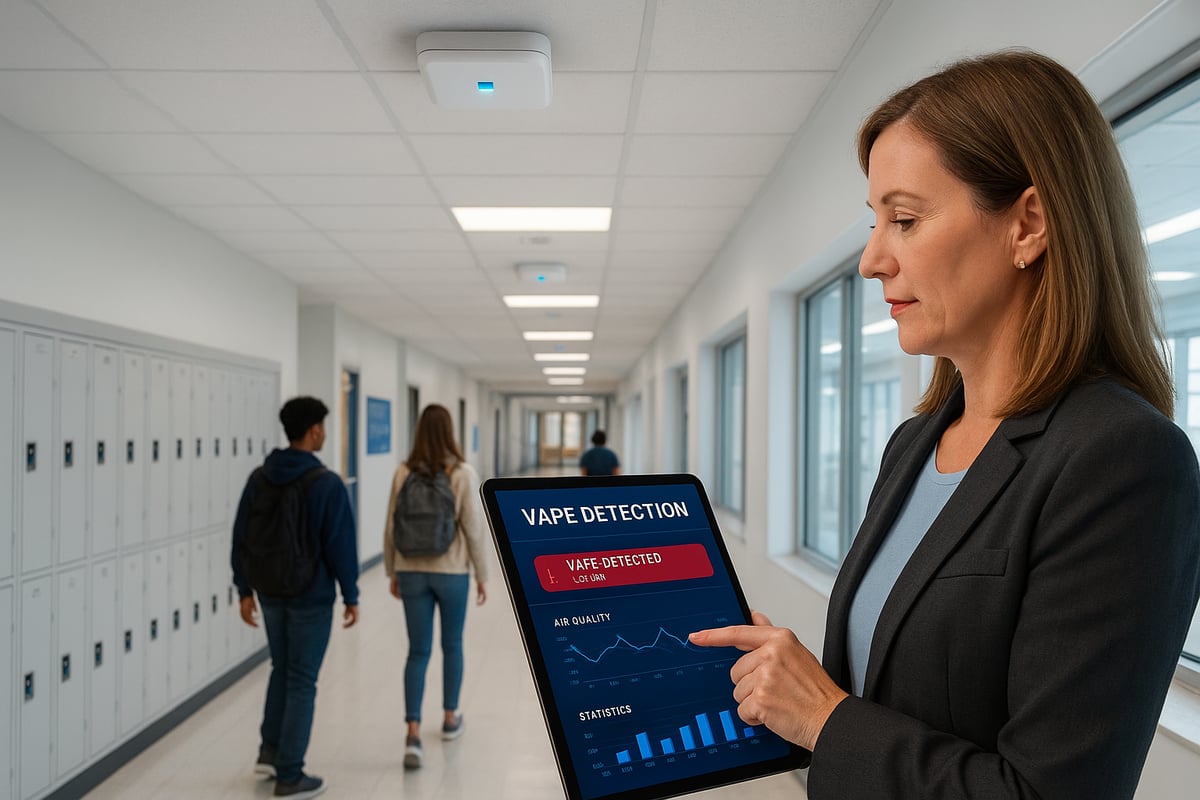
Core detection technologies: sensors, AI, and analytics
At the heart of anti vaping technology in 2025 are highly sensitive sensors, sophisticated AI, and powerful analytics platforms. These systems use particulate, chemical, and gas sensors to identify vape aerosols, nicotine, THC, and even emerging synthetic cannabinoids. AI algorithms analyse patterns in the air, distinguishing vaping from everyday environmental changes.
Key features include:
- Rapid detection of multiple substances
- AI powered alert systems with pattern recognition
- Continuous data collection for actionable insights
For a deeper look at how these technologies operate, see this vape detection technology overview. With anti vaping technology evolving rapidly, accuracy and reliability are now industry benchmarks.
Integration with building management and security systems
Modern anti vaping technology integrates seamlessly with existing building management and security systems. Detection devices can trigger alarms, activate cameras, or restrict access to sensitive areas. These integrations automate responses and ensure that incidents are managed swiftly, reducing manual intervention.
Facilities benefit from:
- Automated alerts sent to designated staff
- Integration with CCTV for incident verification
- Connection to access control for targeted lockdowns
Such capabilities streamline enforcement and support rapid resolution, making anti vaping technology a cornerstone of modern facility safety.
Mobile and cloud-based monitoring platforms
Administrators in 2025 rely on mobile and cloud based platforms to manage anti vaping technology across multiple locations. Through intuitive apps and dashboards, staff can monitor real time alerts, review historical data, and track trends from anywhere.
Benefits include:
- Remote access to live and historical incident data
- Centralised management for multi site deployments
- Customisable notifications to suit organisational needs
This flexibility ensures that anti vaping technology remains responsive to changing risks and supports proactive decision making.
Accuracy, reliability, and minimising false positives
One of the greatest advancements in anti vaping technology is the reduction of false positives. Improved sensor calibration and smarter software algorithms filter out non vape aerosols, such as deodorant sprays or steam. Industry studies now report detection accuracies above 95 percent, with significant drops in nuisance alarms.
Key improvements:
- Enhanced sensor specificity for vaping compounds
- Adaptive algorithms that learn from each environment
- Regular software updates to address new vaping tactics
These enhancements allow organisations to trust their anti vaping technology and focus on genuine incidents.
Privacy, data protection, and ethical considerations
With any monitoring system, privacy and data protection are critical. Anti vaping technology in 2025 is designed to comply with GDPR and other data regulations, ensuring that data collection is secure and limited to necessary information. Systems anonymise user data and restrict access to authorised personnel.
Ethical safeguards include:
- Clear policies on data use and retention
- Transparent communication with affected individuals
- Regular privacy audits and compliance checks
This approach balances the benefits of anti vaping technology with the rights of students, employees, and visitors.
Cost, scalability, and ease of installation
Adopting anti vaping technology has become more affordable and scalable in 2025. Solutions are available for single site installations as well as large multi building campuses. Many systems use wireless devices that minimise installation time and disruption.
Comparison table:
| Feature | Entry Level | Enterprise |
|---|---|---|
| Installation | Plug and play | Professional setup |
| Coverage | Single room | Whole campus |
| Support | Online help | Dedicated team |
Organisations can match anti vaping technology to their needs and budget, ensuring broad access to protection.
Real world impact: statistics and case studies
The adoption of anti vaping technology has delivered measurable results. Schools and offices report dramatic reductions in vaping incidents, improved air quality, and increased confidence among staff and students. Case studies highlight up to 94 percent fewer incidents within weeks of installation, with users praising the reliability and ease of use.
These real world successes underscore the value of investing in anti vaping technology as a proactive solution to a persistent public health challenge.
Step-by-Step Guide to Implementing Anti Vaping Technology
Implementing anti vaping technology is a strategic process that ensures your environment is protected and compliant. By following these steps, organisations can maximise the effectiveness of their chosen solution and create safer, healthier spaces for everyone.

Assessing your environment and needs
Begin by evaluating your environment to identify high risk areas where vaping may occur. Focus on places with limited supervision, such as toilets, changing rooms, or secluded corridors. Consider the demographics and behaviours of your population, as young people and certain employee groups may be more vulnerable.
Involve key stakeholders early. Gather input from leadership, safeguarding teams, facilities managers, and health officers to ensure all perspectives are considered. This collaborative approach forms a solid foundation for choosing the right anti vaping technology.
Selecting the right technology and vendor
Next, compare available anti vaping technology solutions. Evaluate detection accuracy, types of substances detected, integration capabilities, privacy features, and cost. Look for vendors offering robust support and proven results.
Use a table to compare features:
| Feature | Solution A | Solution B | Solution C |
|---|---|---|---|
| Detection accuracy | 95% | 92% | 97% |
| Substances detected | Nicotine, THC | Nicotine only | Nicotine, THC, synthetics |
| Mobile integration | Yes | No | Yes |
| Support availability | 24/7 | Business hours | 24/7 |
Selecting a vendor with experience in your sector ensures a smooth implementation of anti vaping technology.
Planning installation and integration
Careful planning is essential before installing anti vaping technology devices. Map out where sensors will be placed for optimal coverage. Prioritise areas identified during your assessment, and ensure devices are not easily tampered with.
Integrate the technology with existing security and IT systems. This may include linking to alarms, access control, or camera systems for automated incident response. Collaboration between IT, facilities, and security teams is vital for seamless integration.
Training staff and raising awareness
Effective implementation of anti vaping technology relies on informed staff and clear communication. Develop comprehensive training programmes for all relevant staff, including teachers, security personnel, and cleaning teams.
Leverage educational resources and real world examples, such as those found in Reducing vaping in schools, to reinforce policy and demonstrate the technology’s impact. Visible awareness campaigns can help deter vaping and encourage a culture of compliance.
Establishing monitoring protocols and response plans
Set up clear monitoring protocols for your anti vaping technology. Configure alert systems so that notifications reach the right people quickly. Define a hierarchy for responses, specifying who should be contacted in various scenarios.
Create response plans detailing steps to follow after a vaping incident is detected. These should include investigation, documentation, and follow up actions aligned with your organisation’s policies.
Ongoing evaluation and system updates
Regularly review incident data and feedback from users to assess the effectiveness of your anti vaping technology. Use this information to refine placement, adjust alert thresholds, and identify emerging trends.
Schedule routine maintenance and software updates to ensure the system remains accurate and reliable. Engage with your vendor for ongoing support and updates on new features or regulatory changes.
Measuring success: KPIs and reporting
Define clear key performance indicators (KPIs) to measure the success of your anti vaping technology deployment. Common KPIs include reductions in vaping incidents, improved air quality, and response times to alerts.
Produce regular reports for stakeholders, highlighting progress and areas for improvement. Transparent reporting builds trust and supports a long term culture of prevention.
Leading Anti Vaping Technologies and Solutions in 2025
The anti vaping technology landscape in 2025 is defined by rapid innovation, diverse offerings, and increasing demands for accuracy and integration. Institutions across the UK and globally are seeking solutions that address vaping in real time, while also supporting broader safety strategies. Understanding the range of anti vaping technology options, their differentiators, and how they are deployed is crucial for leaders tasked with safeguarding their environments.
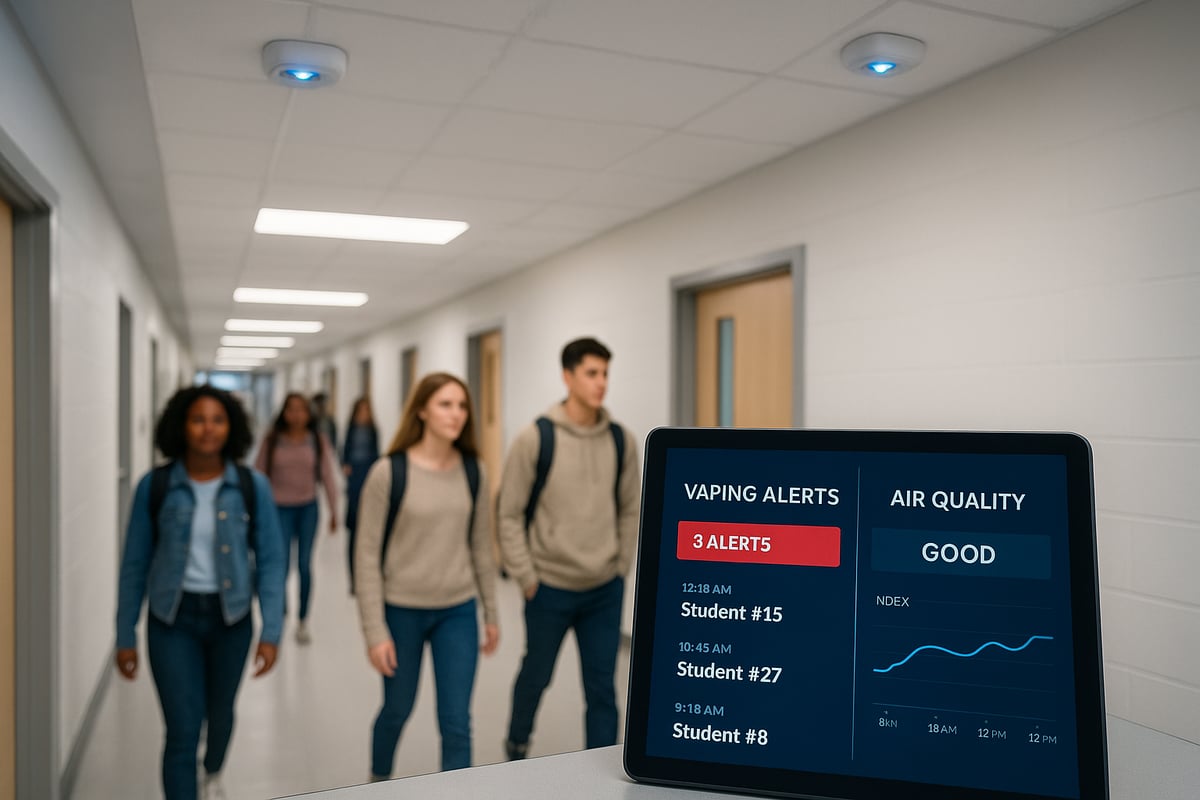
Overview of the technology landscape
In 2025, anti vaping technology providers offer a spectrum of solutions tailored to different settings, such as schools, offices, and leisure venues. Key players compete on detection accuracy, integration capabilities, ease of use, and ongoing support. The most advanced systems combine multiple detection methods, including chemical, particulate, and acoustic sensors, to deliver reliable identification of vaping incidents.
A comparison of leading products often highlights features such as real time alerts, AI-powered analytics, and cloud-based dashboards. Institutions look for anti vaping technology that can scale across multiple sites, integrate with existing security systems, and provide actionable insights. The market is also shaped by regulatory compliance requirements, which influence technology adoption and feature sets.
Sensor-based devices: features and deployment
Sensor-based anti vaping technology remains at the core of most solutions. Devices use a combination of particulate, chemical, and sometimes acoustic sensing to detect substances such as nicotine, THC, and synthetic cannabinoids. Placement of sensors is strategic, focusing on high risk areas like toilets, changing rooms, and secluded corners.
Deployment success is often measured by reductions in vaping incidents and positive feedback from users. For example, Vape Guardian case studies illustrate how schools and businesses have achieved measurable improvements in air quality and policy compliance after installing sensor-based devices. These real world examples underscore the value of anti vaping technology in delivering tangible results.
AI and machine learning in vape detection
Artificial intelligence and machine learning have transformed anti vaping technology by dramatically improving detection accuracy. Modern systems analyse data patterns to distinguish between vaping aerosols and harmless environmental factors, reducing false positives and unnecessary disruptions.
Predictive analytics add another layer of sophistication. By reviewing historical data, AI tools can identify emerging vaping hotspots and times of increased activity. This enables proactive interventions and more efficient allocation of resources. AI-powered anti vaping technology also supports automated incident reporting, further streamlining response processes.
Mobile app integration and real time alerts
Many anti vaping technology solutions now feature seamless integration with mobile apps. Administrators and designated staff receive instant notifications of detected vaping events, allowing for rapid response and consistent enforcement of policies.
User feedback indicates that mobile app interfaces are valued for their intuitive design and accessibility. Real time monitoring across multiple buildings, even from offsite locations, empowers stakeholders to maintain safe environments without constant manual oversight. This level of connectivity is increasingly seen as essential in comprehensive anti vaping technology deployments.
Air quality monitoring as a complementary tool
Continuous air quality monitoring is a key component of holistic anti vaping technology strategies. By tracking levels of particulates, volatile organic compounds, and other pollutants, these systems provide ongoing assurance that spaces remain healthy and compliant with regulations.
Improved air quality has been linked to better wellbeing outcomes for students and employees. Monitoring data can also support evidence-based decision making and demonstrate compliance to inspectors and stakeholders. In some cases, air quality metrics serve as early indicators of hidden vaping activity, prompting targeted investigations.
Multi threat detection: beyond vaping
The latest anti vaping technology platforms are evolving to address a broader spectrum of threats. Devices now commonly offer multi threat detection, identifying not only vaping but also drugs, antisocial behaviour, and environmental hazards such as smoke or chemical leaks.
This comprehensive approach is particularly valuable in large institutions and public venues where multiple risks intersect. Facilities managers appreciate the efficiency of unified systems that streamline monitoring and reporting, reducing the need for separate technologies and minimising operational complexity. Adopting multi threat anti vaping technology supports a culture of safety and accountability.
Customer support, training, and ongoing service
Effective anti vaping technology solutions are supported by robust customer service, training programmes, and regular system updates. Vendors that provide comprehensive onboarding, clear documentation, and responsive troubleshooting help organisations maximise their investment and ensure sustained compliance.
Ongoing training is essential to keep staff informed about new features and best practices. Institutions benefit from scheduled maintenance and software updates that maintain detection accuracy and introduce enhancements. User experiences consistently highlight the importance of reliable support in achieving long term success with anti vaping technology.
Challenges, Limitations, and Future Trends in Anti Vaping Technology
Anti vaping technology has advanced rapidly, yet significant challenges and future considerations remain. As these systems become more widespread, understanding their technical, ethical, and practical boundaries is essential for effective implementation and ongoing improvement.
Technical challenges and limitations
Despite impressive progress, anti vaping technology faces persistent technical hurdles. Detecting vape aerosols in large or open spaces is complex, as air circulation can quickly dissipate particles. This can lead to missed incidents or require higher sensor density, impacting cost and maintenance.
False positives remain a concern, especially when devices encounter non-vape aerosols such as hairsprays or fog from cleaning products. Manufacturers are addressing this with advanced algorithms and improved sensor calibration, but no system is immune. Maintenance, including battery replacement and software updates, is another ongoing requirement for reliability.
Facilities must balance comprehensive coverage with operational feasibility. Larger sites may need a networked approach, combining multiple detection points to ensure anti vaping technology is both effective and manageable.
Privacy, consent, and legal risks
The use of anti vaping technology raises important privacy and consent questions. Devices often collect environmental and behavioural data, which must be handled in compliance with strict data protection laws such as GDPR. Transparent communication with students, employees, and visitors about monitoring practices is essential.
Concerns frequently arise regarding the extent of surveillance and the potential for misuse of data. It is crucial that organisations implement clear policies, limit data retention, and provide opt out options where possible. The UK school vaping laws 2025 highlight the need for schools and institutions to align anti vaping technology deployment with current legal frameworks and best practices.
Evolving vaping products and user tactics
In 2025, vaping devices are more sophisticated and discreet than ever, posing new challenges for anti vaping technology. Manufacturers of illicit products are developing stealth devices that emit minimal vapour or mimic everyday objects, making detection harder.
This ongoing arms race between detection systems and user tactics requires technology providers to innovate continuously. Machine learning and adaptive sensor algorithms are being integrated to identify emerging patterns and product signatures. Staying ahead of these trends is essential for anti vaping technology to remain effective.
Ensuring equitable access and avoiding unintended consequences
While anti vaping technology can transform environments, access to these solutions is not universal. Underfunded schools and organisations often face cost barriers, limiting their ability to deploy comprehensive systems. Vendors are responding with scalable and modular options, yet affordability remains a challenge.
There is also a risk of over-surveillance, particularly in educational settings. Excessive monitoring can erode trust and create a punitive atmosphere. It is vital to balance safety objectives with respect for individual privacy and dignity, ensuring that anti vaping technology supports, rather than undermines, positive community relationships.
The future: innovations on the horizon
The next wave of anti vaping technology is set to deliver even greater precision and integration. Research is underway into next generation sensors capable of detecting a broader range of substances at lower concentrations, with faster response times.
Artificial intelligence will play a bigger role, enabling predictive analytics and automated incident management. Integration with wider building management and health systems is becoming more common, allowing anti vaping technology to contribute to broader wellbeing and safety strategies.
Policy and societal shifts
Legislation and public attitudes continue to shape the adoption of anti vaping technology. Anticipated updates to UK and EU regulations will likely introduce stricter compliance requirements, particularly in schools and public venues. Education remains a crucial partner to technology, with awareness campaigns and preventative programmes needed alongside detection systems.
Recent reports on stagnation in UK vaping rates post-2024 suggest that policy changes can influence behaviour, but ongoing vigilance is required. As the landscape evolves, organisations must adapt their anti vaping technology strategies to meet emerging expectations.
Global perspectives and best practices
International case studies offer valuable lessons for the UK and beyond. Successful deployments of anti vaping technology in countries like the United States and Australia demonstrate the importance of customising solutions to local needs and regulations.
Best practices include stakeholder engagement, continuous training, and robust evaluation of system performance. Policymakers, educators, and facility managers should collaborate, sharing insights and resources to maximise the benefits of anti vaping technology while minimising risks.
As we have explored, the rapid evolution of vaping devices and the increasing need for proactive solutions in schools, offices, and public spaces make advanced detection technology more important than ever. If you are interested in understanding how these intelligent sensors work in real-world environments—detecting vape aerosols, drugs, and anti-social behaviour while ensuring privacy and compliance—I invite you to learn more about how it works. This is your next step towards creating safer, healthier environments for everyone in your care.
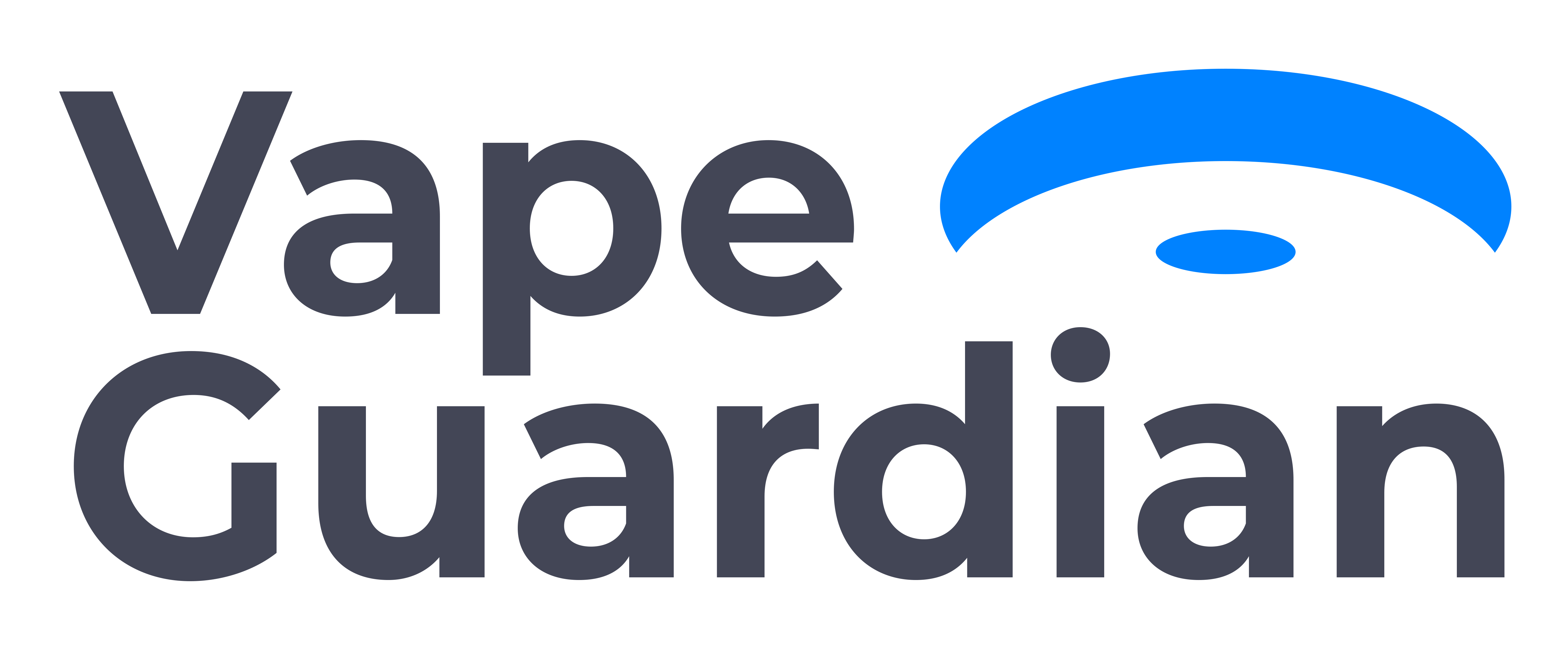

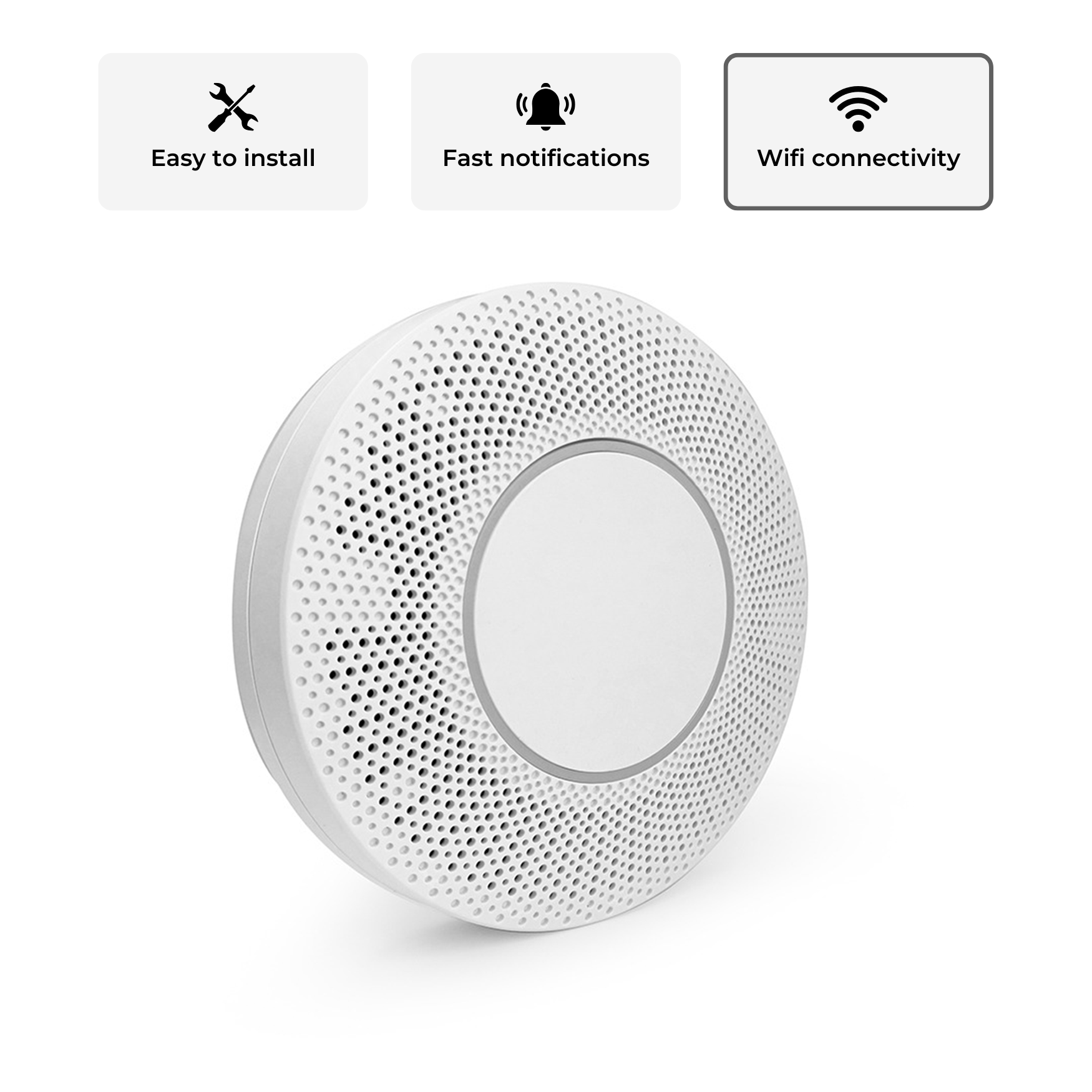
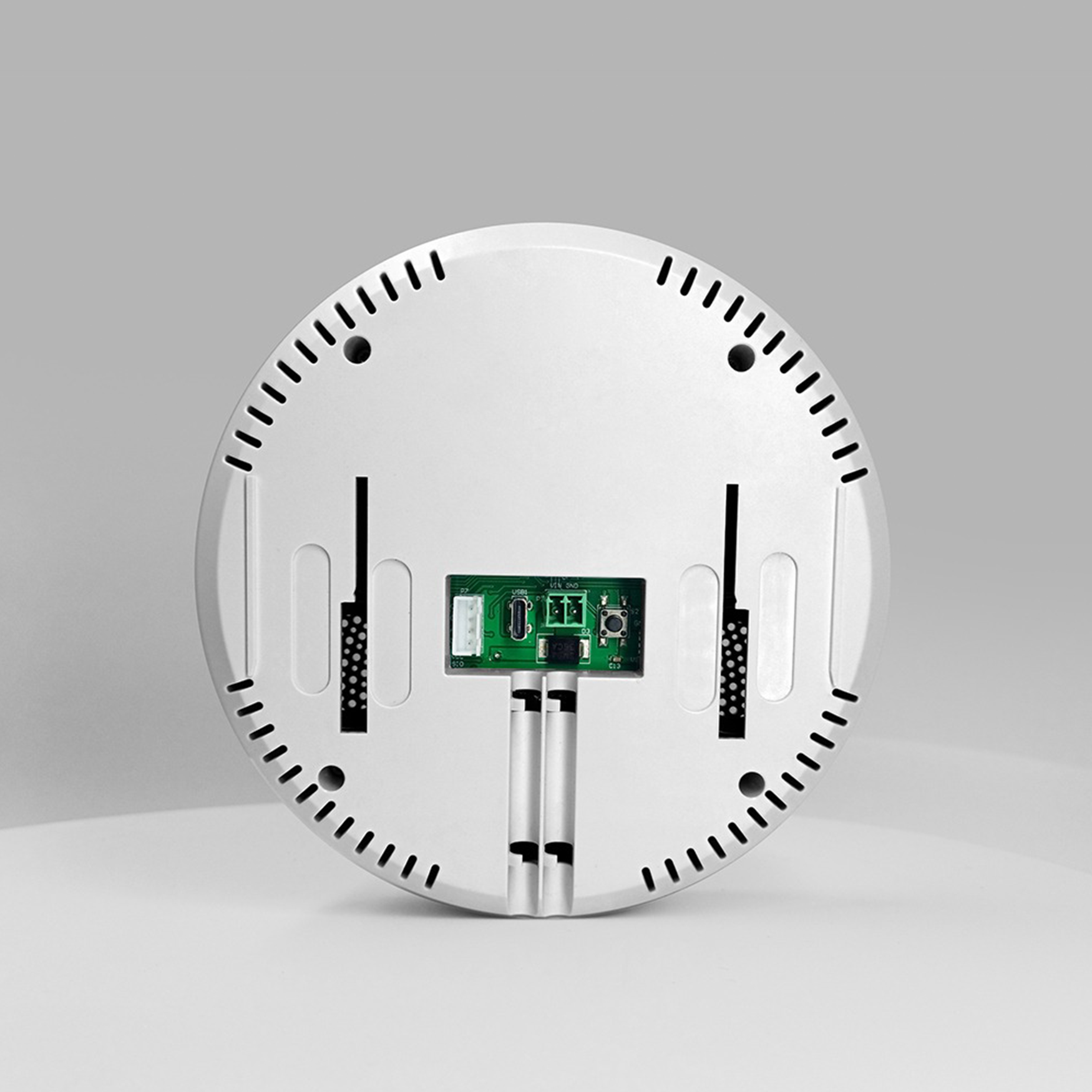

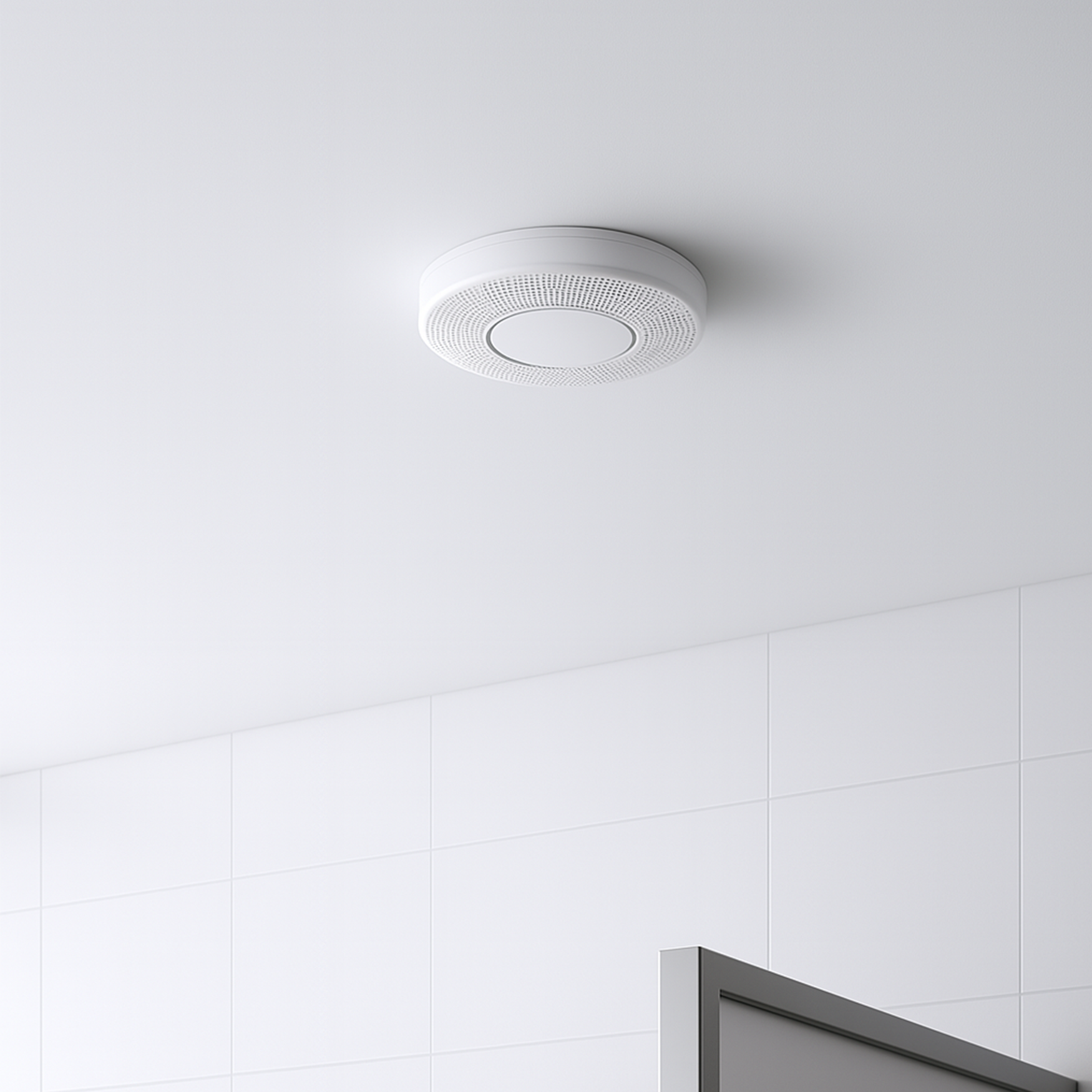
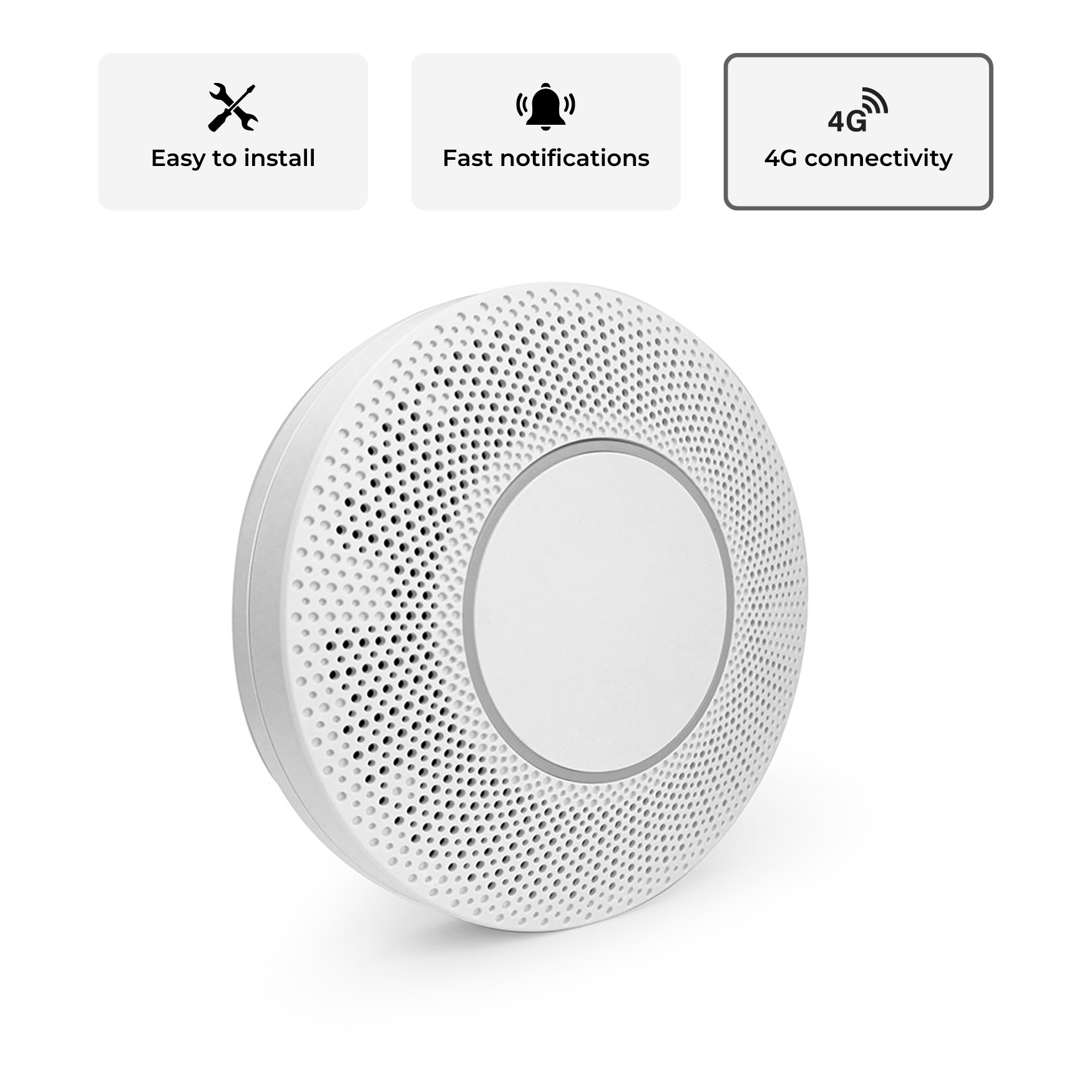

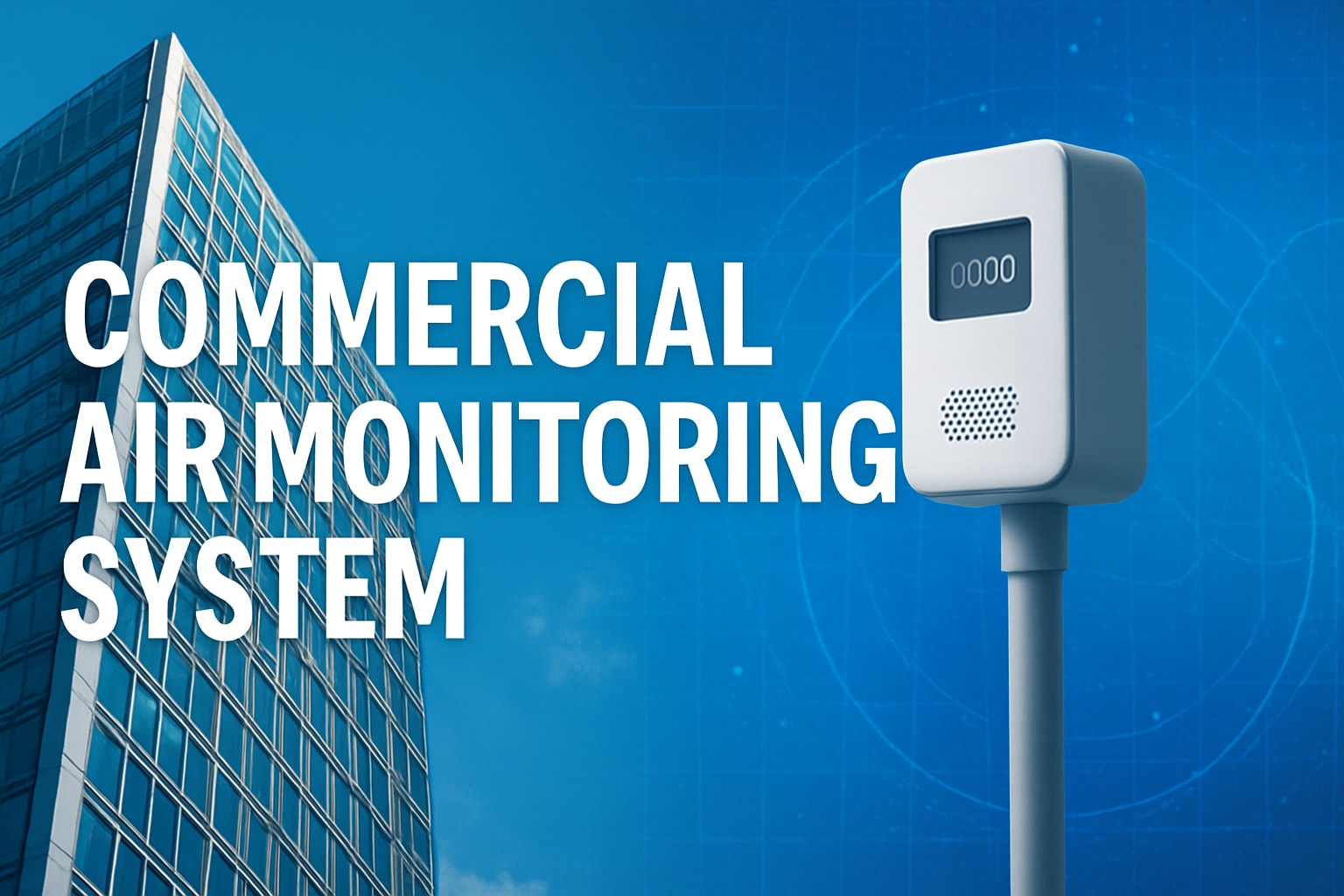


Share:
Vape Guardian Guide: Your Essential 2025 Protection Handbook
School Vape Policy Solution: The Complete Guide for 2025